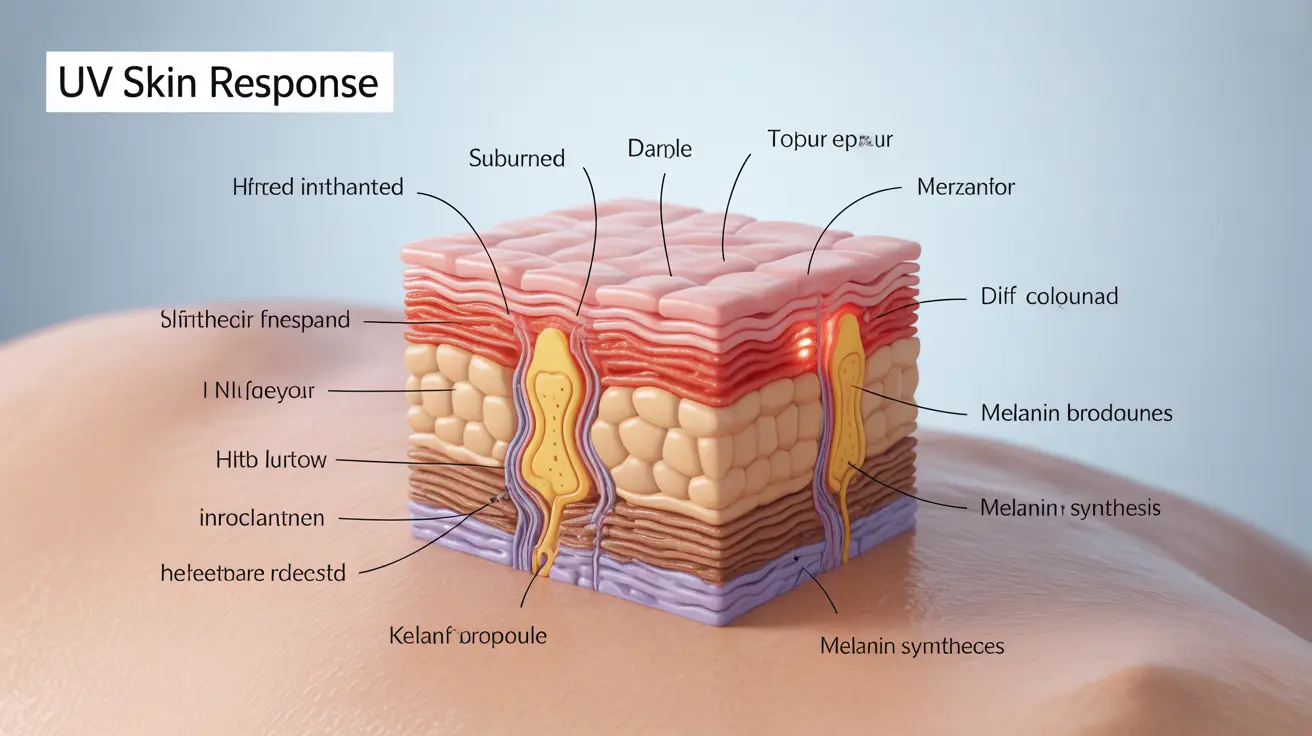When summer arrives, many people wonder about the relationship between sunburns and tans, particularly whether a painful sunburn will eventually transform into a golden tan. Understanding how your skin responds to sun exposure is crucial for maintaining healthy skin and preventing long-term damage.
The reality is that sunburns and tans are two distinct responses to UV radiation, each indicating different types of skin damage. Let's explore the science behind these reactions and learn how to protect your skin effectively.
How Your Skin Responds to Sun Exposure
When your skin is exposed to UV radiation, it triggers two different protective mechanisms. A sunburn is your skin's immediate inflammatory response to UV damage, while tanning is a delayed reaction as your skin attempts to prevent further harm.
The Sunburn Response
A sunburn occurs when UV rays damage the DNA in your skin cells, causing them to die. This triggers inflammation, resulting in redness, pain, and sometimes blistering. The peeling that follows is your body's way of shedding damaged cells.
The Tanning Process
Tanning happens when UV exposure stimulates melanocytes to produce more melanin, the pigment that gives skin its color. This process is separate from sunburn, though both can occur from the same sun exposure session.
The Connection Between Sunburns and Tans
While a sunburn may eventually fade into what appears to be a tan, these are actually two separate processes occurring in your skin. The darker appearance after a sunburn can be attributed to:
- Post-inflammatory hyperpigmentation
- Increased melanin production
- Damaged skin cell turnover
Health Implications of Sun Exposure
Both sunburns and tans indicate skin damage that can lead to serious health consequences:
- Premature aging and wrinkles
- Increased risk of skin cancer
- Uneven skin tone and dark spots
- Weakened skin barrier function
Safe Sun Protection Strategies
To protect your skin from both sunburn and unsafe tanning, follow these essential guidelines:
- Apply broad-spectrum sunscreen with at least SPF 30
- Reapply sunscreen every 2 hours or after swimming
- Seek shade during peak UV hours (10 am to 4 pm)
- Wear protective clothing, including hats and sunglasses
- Consider using self-tanning products for a safer glow
Frequently Asked Questions
- Does a sunburn turn into a tan over time or are they different skin reactions?
Sunburns and tans are different skin reactions to UV exposure. While a sunburn may appear to fade into a tan, they are separate processes. A sunburn is damage-induced inflammation, while a tan is your skin's attempt to protect itself by producing more melanin.
- Why does my sunburned skin sometimes look darker as it heals?
Sunburned skin may appear darker during healing due to post-inflammatory hyperpigmentation and increased melanin production. This is your skin's response to damage rather than a healthy tan.
- How does melanin production affect whether I get a tan after sun exposure?
Melanin production varies among individuals based on genetics and skin type. When exposed to UV rays, melanocytes produce more melanin as a protective response, determining how easily you tan and how dark your tan becomes.
- What are the health risks associated with sunburn and tanning?
Both sunburns and tanning increase your risk of skin cancer, premature aging, and long-term skin damage. Even a single severe sunburn can significantly raise your risk of developing skin cancer later in life.
- How can I protect my skin from sunburn and avoid harmful tanning?
Protect your skin by using broad-spectrum sunscreen, wearing protective clothing, seeking shade during peak UV hours, and getting regular skin checks. If you desire a tanned appearance, consider using self-tanning products instead of exposing yourself to harmful UV radiation.




